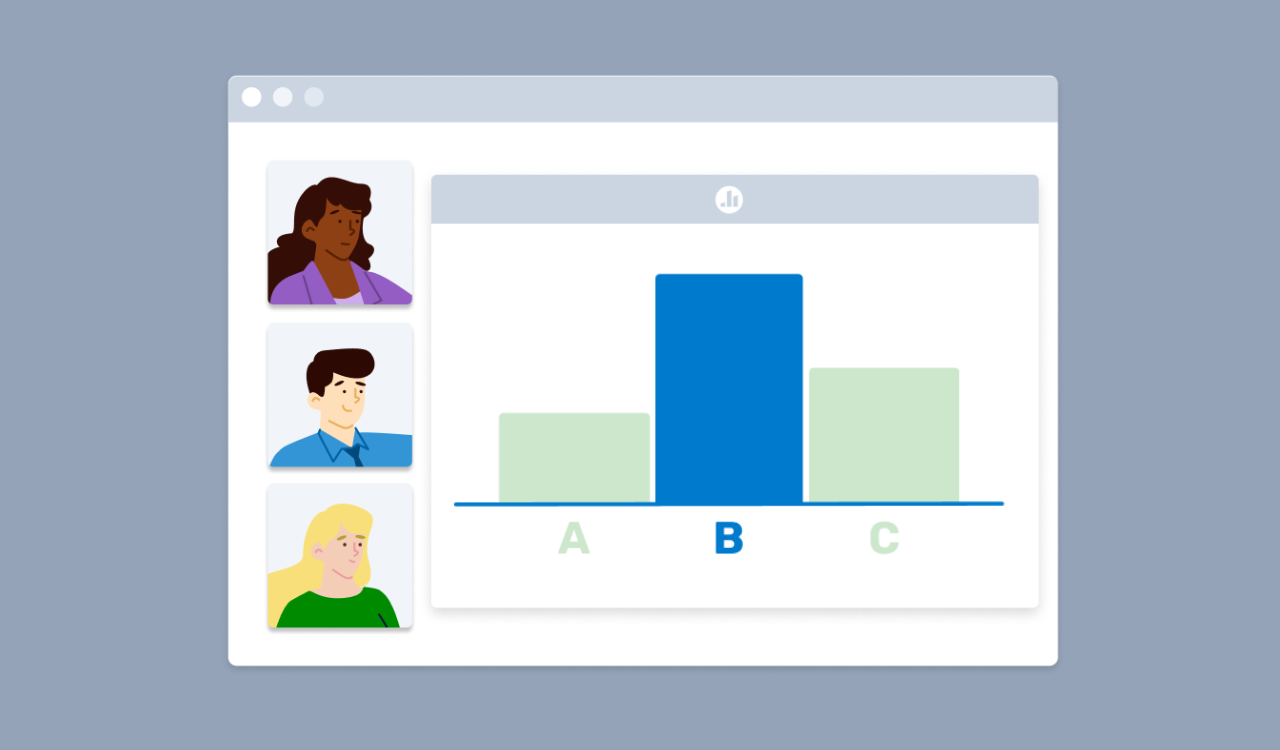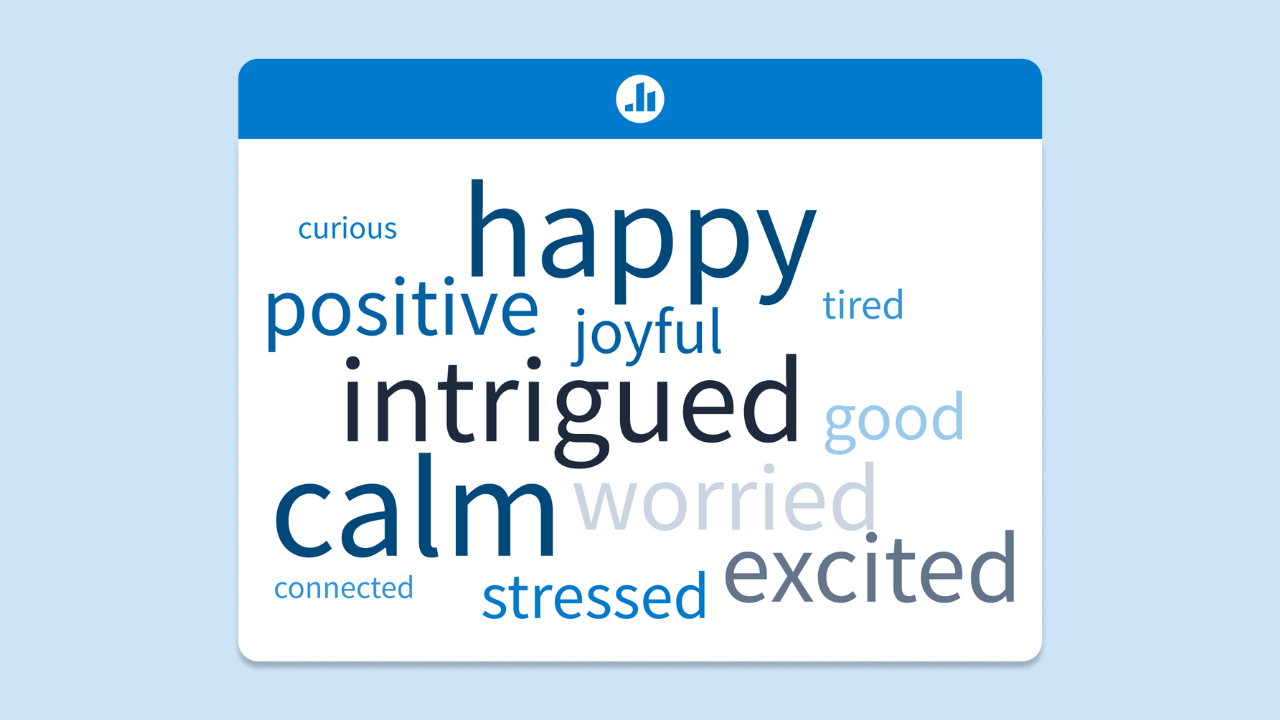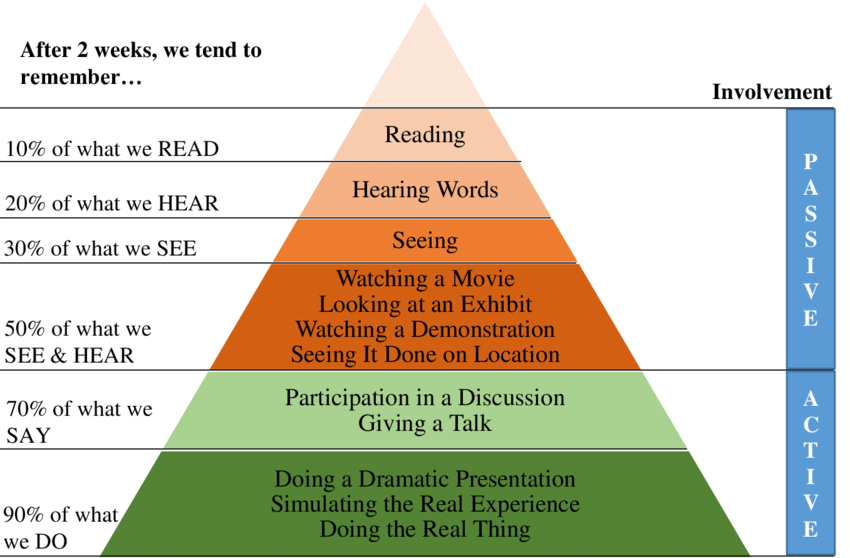5 Interactive Presentation Ideas to Make Your Message Memorable

One of the greatest challenges presenters face is making their content memorable. Not only do they want to hold the attention of the audience, but they also want people to reflect on the presentation after it ends. There are plenty of ways to engage people, from opening jokes to icebreaker games, but they don’t necessarily guarantee that your audience will remember and actively apply your message.
There is a science to connecting and engaging with audiences so that they better retain the information you present. The key is to make your presentations more interactive so people better engage with and retain your ideas. Discover why interaction is so valuable and test these interactive presentation ideas with your next audience.
Why interactive presentations are so effective
To better understand why interactive presentations work, it helps to briefly step into the world of pedagogical theory. American educator Edgar Dale is credited with inventing the Cone of Experience, which highlights how we only remember 20% of what we hear, but 70% of what we say and 90% of what we do. Listening to a presentation and scanning slides on a deck is a form of passive learning, where audiences are more likely to forget the material. Conversely, discussing the content with someone else or simulating an experience is a form of active learning where audiences remember and apply what they know.
Interactive presentations move audiences deeper into the Cone of Experience where they better engage with your message. People are more likely to remember what you are trying to convey and can tie your message to the activities you developed to reinforce your ideas. That doubles the opportunity for them to remember something compared to simply hearing a message during a static presentation.
5 interactive presentation ideas for active learning
There’s no one-size-fits-all approach to interactive learning. Depending on your audience and topic, you can incorporate multiple activities and engaging elements into your talk. Here are a few ideas to get started if you are ready to elevate your presentations.
1. Lead with real-time trivia questions
The first way to engage your audience is to collect feedback from your audience. Start your presentation with real-time trivia that tests what they know. You can incorporate a Poll Everywhere Multiple Choice Activity or a short Competition to quiz your audience. This immediately engages your listeners and challenges them to think about the content.
There is also a pedagogical reason for leading with trivia: you are tapping into prior knowledge. Your audience members don’t have to be experts on the topic at hand, but they can reflect on what they are already familiar with and reinforce their knowledge with your messaging. This makes the content stickier, meaning your audience is more likely to remember it.
After you ask the first questions, incorporate trivia throughout your presentation to reinforce concepts. A great example of this would be starting your presentation with a well-known misconception related to your topic. Ask your audience to answer based on what they know, and then after disproving this concept, ask them the same question again. Your audience will be surprised by the difference in their answers. This will also give your audience a dopamine hit (the feel-good hormone that comes with “aha!” moments) when they realize how much they are learning.
2. Let audience members express themselves through polls
Polling is a form of trivia that lets people express their opinions or ideas about a topic. For example, if you are leading a group of entrepreneurs through an accounting seminar, you might take a poll to identify what percentage of the audience “thinks bookkeeping is tedious,” or “gets overwhelmed easily by financial spreadsheets.”
Take advantage of real-time polling software like Poll Everywhere to see how your audience feels about the topic at hand or the information they are learning.
There is also a psychological reason to take these polls: they enable you to tap into group emotions where people form connections because they experience the same feelings. This creates a sense of community and ties your messaging to emotional responses, making the content more memorable.
3. Create a collaborative whiteboard
A collaborative whiteboard (or giant Post-it note) allows people to share their thoughts and ideas on the material as you introduce new concepts. It is a form of scaffolding where you start with a foundational idea and expand on it with more advanced information. You can create a single whiteboard with your audience or break them into groups so they create their giant Post-its together.
Whenever there is a new idea, you or your audience writes it down on the whiteboard – ideally with a keyword or definition that explains what it means. New information is added throughout the presentation, highlighting how various concepts tie together.
This is a form of active note-taking and collaborative learning where everyone works together to create a finished product.

4. Create roleplay opportunities
Another way to utilize active learning is to let audience members work through situations where the material is applied. You can either break your audience into small groups to work through these activities or ask for a few brave volunteers to interact with you in front of everyone else.
The small group method allows everyone to participate, maximizing the amount of active learning in the room. However, for the sake of time and to keep the audience’s attention, you might prefer to run through this roleplay with just one or two people.
If you choose the latter option, challenge the rest of your audience to think of their answers while listening to the main volunteer. You can also ask the group to answer questions in real time with a Poll Everywhere Q&A Activity before the roleplay begins so you can see how the group’s answers compare to the volunteer’s responses.
5. Ask your audience members to teach the material to each other
One of the best ways to prove that you understand a concept is to teach it to others. This is another opportunity for your audience to break into groups while you walk around the room helping each pod of learners.
Consider developing worksheets where the groups have to work through problems by applying what they learned. They can then explain to each other why they came up with those answers. These discussions can give audience members space to think about what they learned and how they can apply it. Try to incorporate open-ended questions into this group work that fosters healthy discussions.
After the group work is complete, bring everyone together to discuss what they learned. People can highlight the challenges they faced, which alerts you to material you might want to review before the session is over. This is also a great way to collect feedback on which parts of your presentation are confusing to audiences.
Test interactive presentation ideas with Poll Everywhere
Interactive elements can make any presentation more memorable, whether you are speaking to a group of employees or giving a keynote speech at an industry-leading conference. Wherever you talk, bring Poll Everywhere with you. Poll Everywhere is a great resource to engage audiences with trivia, poll questions, and word clouds. You can make your presentations better and form strong connections with your audiences.
Create memorable and engaging presentations with Poll Everywhere. Create an account and incorporate one of our 8 core Activities types in your next presentation.

